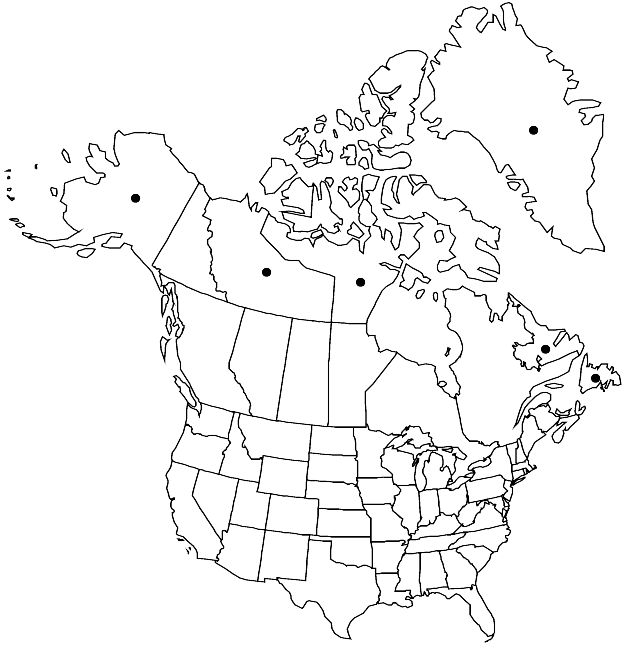Ptychostomum acutiforme
Phytologia 89: 113. 2007.
Plants in dense or open turfs, green, yellow-green, or brown. Stems 1–2 cm, fertile stems comose, innovations evenly foliate. Leaves yellow-green to yellowbrown, somewhat distant, weakly contorted to somewhat imbricate when dry, ovatelanceolate, concave or sometimes flat, 0.5–2 (–3) mm, enlarged toward stem apex; base red near costa, green otherwise, not decurrent; margins plane, limbidium moderately strong, in (1–) 2–3 rows; apex acute to acuminate; costa not reaching apex to percurrent, apiculus sometimes present, short, slender; proximal laminal cells long-rectangular, (3–) 4–5: 1; medial cells somewhat longer, walls incrassate; distal cells 18–25 µm wide, 2–3: 1, walls thin to incrassate. Specialized asexual reproduction absent. Sexual condition autoicous. Seta redbrown, 2–4 cm, stout, straight to somewhat flexuose. Capsule redbrown or red, ovate, symmetric, 2–3 mm, mouth yellow to yellow-orange; operculum conic, apiculate; peristome reduced; exostome teeth yellow basally, hyaline distally, lamellae ± straight mid-tooth, pores absent along mid line; endostome not adherent to exostome, basal membrane less than 1/2 exostome height, segments with lanceolate to slitlike perforations, cilia absent or rudimentary. Spores with size often variable in same capsule, 28–32 µm, yellow or brown.
Phenology: Capsules mature Jul–Aug.
Habitat: Moist gravelly to sandy soil, near sea, along streams, around lakes
Elevation: low to moderate elevations (0-600 m)
Distribution

Greenland, Nfld. and Labr., N.W.T., Nunavut, Alaska, n Eurasia
Discussion
Ptychostomum acutiforme is related to P. calophyllum, but differs in its ovate-lanceolate leaves with acuminate apices. The leaves have red to red-brown costae and proximal laminal cells narrower than the more distal cells. The hypophysis is thick and abruptly contracted to the seta.
Selected References
None.
Lower Taxa
"narrower" is not a number."narrow" is not a number.